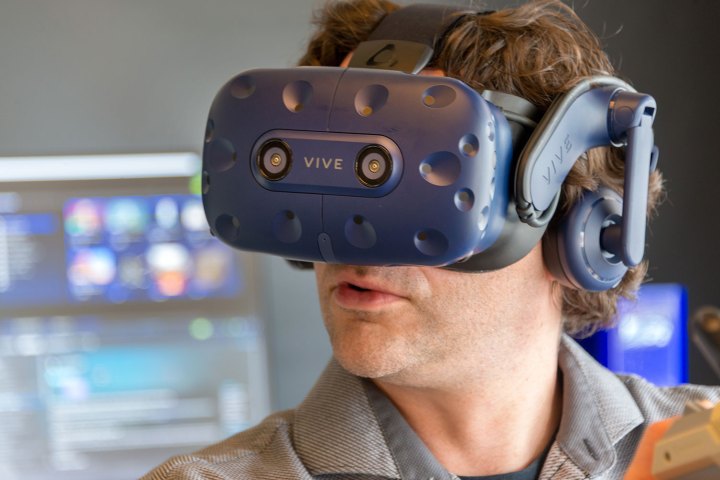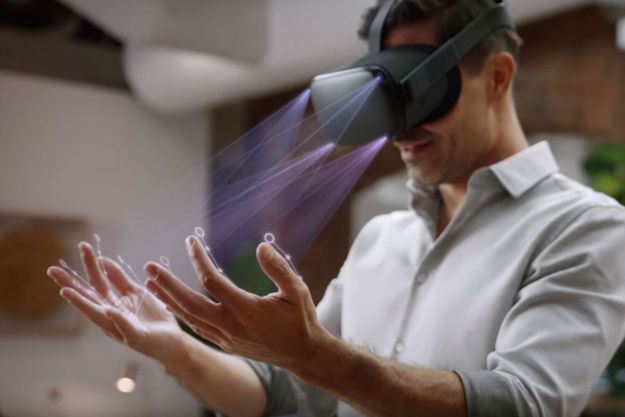
Unnamed sources claim that Nvidia’s upcoming GeForce GTX 1180 add-in graphics card for desktops will likely include a proprietary connector for virtual reality headsets to support 120Hz refresh rates over a single cable. This port will likely be based on the current HDMI 2.1 specification given it’s widely accepted across manufacturers.
Current desktop-based headsets support refresh rates of 90Hz, the vomit-prevention standard in virtual reality where the visuals are rendered at 90 frames per second to prevent motion sickness. This is why you need a somewhat-beefy graphics card to handle the experience. Both the top-of-the-line Samsung HMD Odyssey and HTC Vive Pro render frames on two 3.5-inch AMOLED displays at 1,440 x 1,600 while the HTC Vive and Oculus Rift rely on two 3.5-inch AMOLED screens at 1,080 x 1,200.
But with the GTX 1180, Nvidia is seemingly getting customers ready for the next generation. For instance, Google and LG teamed up to create a 4.3-inch OLED display with 1,443 pixels per inch and a 120Hz refresh rate designed specifically for a wide field of view in virtual reality. The prototype shown earlier this year had a 4,800 x 3,840 resolution while the accompanying paper said the display would rely on eye tracking to blur the areas residing outside the player’s current focus, putting less work on the graphics card.
While rumors point to a definite 2018 release for the GeForce GTX 11 Series, when the cards actually arrive is still somewhat of a mystery. So far, Nvidia appears set to launch its GeForce GTX 11 Series during Gamescom, as the company is supposedly sending members of the press out to Germany for a specific GeForce-related event before or during the gaming convention. Given that’s a long trip, Nvidia likely has more to show the attending press members than a few cool games running on GeForce hardware.
Backing this Gamescom rumor is the volume production of Micron’s GDDR6 memory announced at the end of June, which will supposedly be used on the GTX 11 Series cards. Reports also state that add-in card manufacturers will receive Nvidia’s GPU by the end of August or the beginning of September, which could then take weeks or several months to produce on-the-shelf products. Any problems related to the new “Turing” architecture could push mass availability into the first quarter of 2019.
A recent photo removed from Reddit indicates that card manufacturers may already have the boards manufactured but are waiting on the graphics chips and memory. The version seen in the photo was a prototype that included three eight-pin power connectors, 12 modules of Micron’s GDDR6 memory, and a possible NVLink component, but no GPU.
Signs of a 2018 release was up in the air after a comment made by Nvidia CEO Jensen Huang during a Computex press conference. At the time, he admitted that gamers may not see next-generation graphics cards for “a long time from now,” but didn’t state a release window. Given mass availability may not happen until the end of 2018, that is a long time for gamers eagerly waiting for Nvidia’s next-generation
Editors' Recommendations
- Nvidia may be putting an end to RTX 30-series graphics cards
- Nvidia may only release one RTX 40-series GPU this year — is it worth waiting?
- Nvidia’s GTX 1630 may be up to 72% slower than the GTX 1650
- Nvidia RTX 40-series GPUs may consume a crazy amount of power
- Oculus Quest 2 leak offers details on next-generation VR



